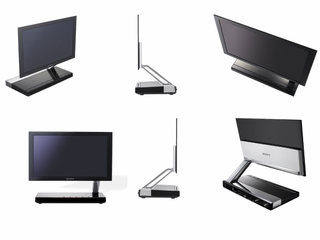Why you'll still be buying LCD in 10 years
Industry specialist says OLED TV sales won't overtake LCD's

Organic Light Emitting Diode (OLED) TV technology is unlikely to become the dominant force in TV systems within the next decade, according to a leading technology market-research firm.
After a wash of hype following the launch of Sony's XEL-1 - the world's first OLED TV - in Japan earlier this month, keen tech watchers have been debating whether Sony's latest product offers a glimpse into the dominant TV technology of the future.
The answer to that, according to technology market-intelligence specialist, iSuppli, is a firm 'no'. Although iSuppli has made some bullish projections for the long-term growth of OLED TVs - from 3,000 shipped units in 2007 to 2.8 million shipped units by 2013 - these figures represent but a drop in the ocean of the global TV market.
According to Andrew Murray, senior director for Display Systems Research at iSuppli, the main obstacle to the growth of OLED display technology is the high manufacturing cost associated with it.
OLED vs LCD and plasma
"The Sony XEL-1 offers impressive performance, but it's an 11-inch screen and the technology used by Sony in its manufacture is hard to scale up. We believe that by 2009 consumers will begin to see more OLED TVs made available to the market, however it's difficult to see, even in 10 year's time, OLED sales overtaking those of LCD or plasma."
Another problem for the future of OLED TVs is that while the tech evolves, competing technologies are unlikely to stand still. As Murray explains, "The benefits of OLED technology are well documented, but in the last few years LCD has been closing the gap".
In other words, as OLED technology becomes more affordable, so the performance of LCD may well begin to rival it, making the added expense of OLED less easy to justify.
Get daily insight, inspiration and deals in your inbox
Get the hottest deals available in your inbox plus news, reviews, opinion, analysis and more from the TechRadar team.
Where does all this leave tomorrow's TV buyers then? According to Murray, the key to the future isn't to be found in any one dominant technology, but in increased choice. Or as Murray succulently puts it, "There is room for all three technologies to co-exist."
Tech.co.uk was the former name of TechRadar.com. Its staff were at the forefront of the digital publishing revolution, and spearheaded the move to bring consumer technology journalism to its natural home – online. Many of the current TechRadar staff started life a Tech.co.uk staff writer, covering everything from the emerging smartphone market to the evolving market of personal computers. Think of it as the building blocks of the TechRadar you love today.
Most Popular

